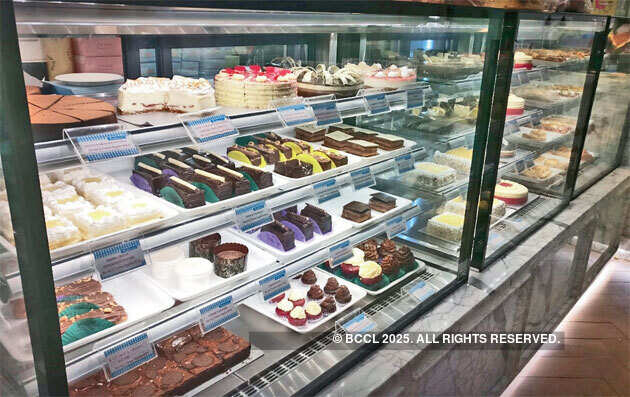“It was almost always a two-and-a-half tier assemblage,” says chef YB Mathur about the construction of the dessert trolley. It carried an internationally famous dessert, a layered dessert, a tart or pie, a pudding and a fruit-based dessert. “If the diners included many ladies then a lemon-based dessert could be included.” Creamy yet refreshing and hard for even the firmest calorie-counter to refuse.
As a table finished its main dishes, the whole ensemble was wheeled up to them and the specially trained server explained the desserts. The top tier was where desserts were cut and served with “a silver handled large service spoon and service fork, two knives and a secret hot-water bath arrangement for warming knives, for cutting cold custard or gelatine-based desserts,” adds Mathur. He is executive director at the Gurgaon-based Institute of Culinary Economics and author of a well received book on the subject.
For children the trolley was a thing of wonder and delight. Through the meal you kept an anxious eye on its meanderings between tables, worried that the desserts you wanted might run out. And then it came and you had to choose just one – though sometimes the servers let you taste more. “Portioning was vital,” says Mathur. The server had to give enough to satisfy, but not too much to cause guilt at such indulgence at the end of a big meal.
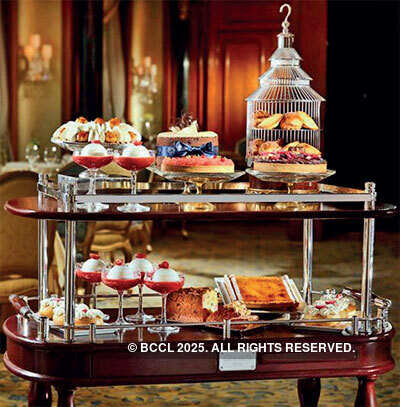
Mathur is passionate about the patisserie, where he worked for years in leading hotels, yet it is a subject that makes him deeply mournful. Because the dessert trolley is almost extinct, surviving only in some sad form in old clubs and restaurants.
Even rarer is its sibling, the gueridon trolley, which has a built-in burner to cook desserts like crepe Suzette at the side of the table. These delicate pancakes are made on the spot, doused in a luscious sauce of sugar, butter, orange juice and liqueur, and then it is all theatrically set on fire. “Who has the skill to do this today?” asks Kainaz Messman, founder of the Theobroma chain of café-bakeries, and an enthusiast for desserts of any kind. Desserts are diminishing in restaurants these days. You still find a perfunctory list on the last page of menus, but rather than attempting to delight diners with the perfect end to a meal, they seem mostly chosen to minimise the effort for the restaurant. They are usually cold, like ice cream, or when served hot, just require a spin in the microwave. Indian sweets often seem to brought in from outside mithaiwallas while Western desserts may come from pastry specialists like Theobroma. It is a far cry from the delights of the dessert trolley.

This is not because diners have lost their sweet tooth. Health concerns might make us more careful about sugar consumption – yet this abstinence also makes desserts even more tempting. When we do indulge we want it to be worth it, and this craving has fuelled the success of chains like Theobroma, and makes dessert crazes, like cronuts, sweep through social media.
So why are restaurants passing the dessert plate? Partly it’s because chefs no longer have, or seem to value dessert-making skills. “Chefs don’t learn the basics,” says Mathur. He recalls telling a chef how to make a dessert by starting with a genoise, the plain sponge cake that is the foundation of many desserts. “He asked me what a genoise was!”
Mathur says chefs now depend too much on “Google Guru” to cover up knowledge gaps. This might work with main dishes where chefs can skilfully improvise on internet instructions, but desserts require precision and technique and there is no shortcut to these. “When I speak to aspiring pastry chefs they all want to make wedding cakes,” says Messman. “They aren’t interested in the more basic cakes you have to know first.”
During the British Raj, when a dessert at the end of dinner was mandatory, Indian chefs were known for their skill at making them. Despite primitive ovens, bad butter and inconsistent eggs, they could turn out feather-light sponge cakes or spin melted sugar into edible caramel baskets that were filled with ice cream and fruits. (One ingredient which British era cooks could use, but would be impossible to use these days, is beef suet, the fat cut from around the kidneys, which is said to make the lightest, best-tasting pastry and puddings).
Five-star hotels later gave chefs like Mathur the chance to hone these skills in pastry departments separate from the heat of the main kitchen. The cooler temperature allowed them to work with butter and chocolate without melting. The extra costs were justified by the pastry department supplying all the restaurants in the hotel and banquets (where weddings required a lavish dessert spread). Some hotels also had separate pastry shops.
But as culinary consultant Ravi Wazir points out, this was not possible when restaurants became independent operations. “Space is very tight in the kitchens of these independent restaurants. They just can’t afford to create a separate space to make desserts.” Mumbai-based chef Gresham Fernandes notes that in hotels pastry chefs could command salaries on a par with the head chef. “It’s hard to justify paying that in an independent restaurant, but the change means that chefs no longer want to spend their careers in a patisserie.”
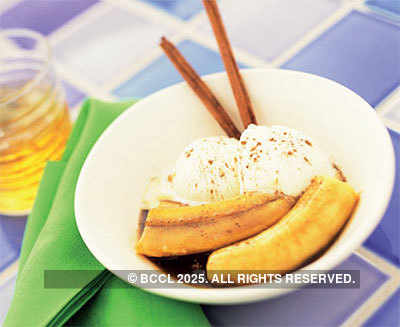
Restaurants willing to give space to a dessert specialist face another problem. “Staff turnover is so high that you can’t risk putting a dessert on the menu and then suddenly there is no one to make it,” says Chennai-based Chef Reji Matthew. He adds that, paradoxically, the high expectations people have for desserts works against them.
“People see amazing-looking desserts online and they want that. If you send them something plain-looking they are going to be disappointed.” At a time when diners let their meals go cold as they take pictures for Instagram, if you can’t produce a sensational dessert it might be best not to try.
Busy restaurants also dislike diners lingering over desserts; in that time they might be able to start seating other guests. And this dislike becomes acute when, as often in these calorie-conscious days, a group of people split one or two desserts. For customers this means a sweet thrill with little guilt, but for restaurants it means a table tied up with little revenue. Desserts can rarely command a high price – beyond a point, perhaps, the guilt of indulging triggers the guilt of spending, particularly at the end of an already expensive meal.
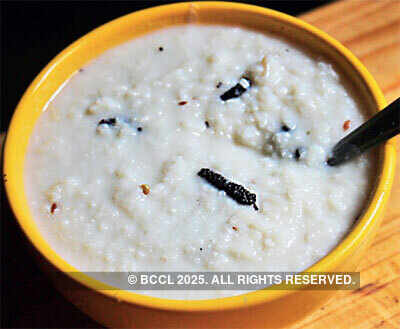
Yet while all these might be practical reasons for the disappearance of desserts from restaurants, it still feels like a wasted opportunity. Unlike dining cultures like Japan, where desserts have never been a big part of meals, in India we have always enjoyed sweets with our meals – in fact, rather than exiling them to the end, they were often served along with other foods on a thali. It might just be a few lumps of jaggery, but we appreciated the chance for a sweet break mid-meal.
We also have such an exceptional range of ingredients that could be used in desserts, starting with natural sweeteners like the different kinds of jaggery, then fruits of all kinds, spices and grains. We make halvas from multiple vegetables and there is even a kheer made from garlic. “We have a lot of potential with Indian ingredients,” says Mathew who uses many traditional south Indian products in his desserts.
Imported ingredients are also easily available, which helps with technical issues like the varying quality of flour in India. But Mathur cautions that just having access isn’t enough: “People don’t know how to use them and those who supply the ingredients don’t help.” Messman agrees that people use ingredients indiscriminately. “I’ve seen a blueberry cheesecake garnished with cherries. Why would you do that when you can get blueberries quite easily?”
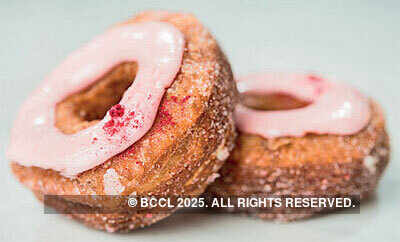
Some restaurants are trying to get around the problem of limited space and hot kitchens. One solution is an offsite central kitchen, like the Magazine Street Kitchen operation started by the founders of The Table in Mumbai. This makes a range of high-end pastries and breads, and spreads the cost by supplying them to other cafes.
Restaurants could also emphasise the desserts that they are more suited to serve than the independent patisseries and mithai shops. While these can be very innovative with flavours, their format works against serving hot desserts like sweet soufflés. “It needs a proper oven and has to be cooked and served immediately,” says Messman. “It’s hard to do that in a shop.” Fernandes points to a technical problem – most restaurant ovens now have powerful fans which are ideal for roasting meats, but work against the delicately raised structure of a soufflé).
In the end, perhaps, it comes down to customers. All the reluctance of restaurants to serve good desserts would vanish if customers showed they were willing to order, and pay a good price, for a really good dessert selection. Perhaps customers could balance the meal with fewer mains, but more desserts. The dessert trolley might actually be ready for reintroduction, with its combination of desserts that can be prepared offsite and a tempting presentation that is ideal for Instagram.
But even better for Instagram are the desserts ritually prepared table-side. Like crepe Suzette, there is a whole range of flambéed desserts – cherries jubilee, bananas Foster – waiting to be rediscovered. Perhaps the only problem is finding a way to stop the smoke detectors when they are made.



